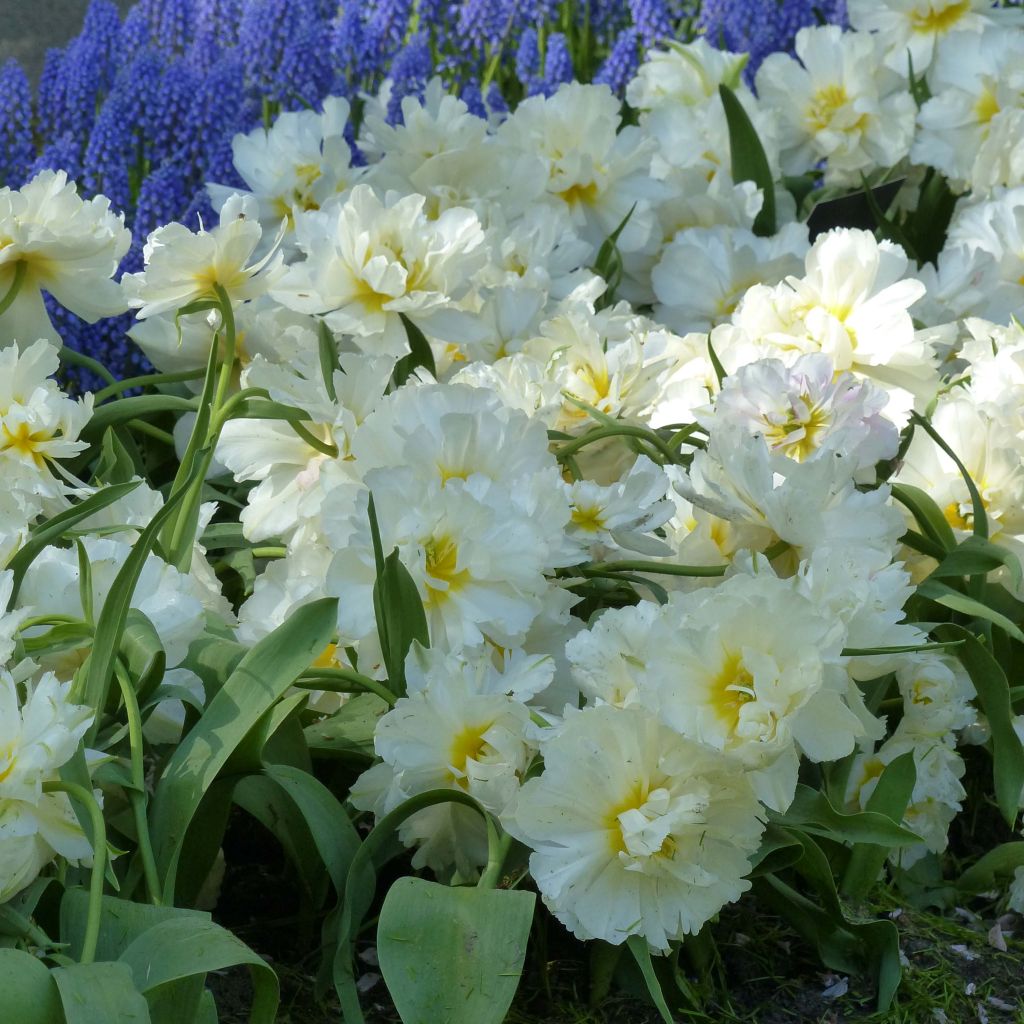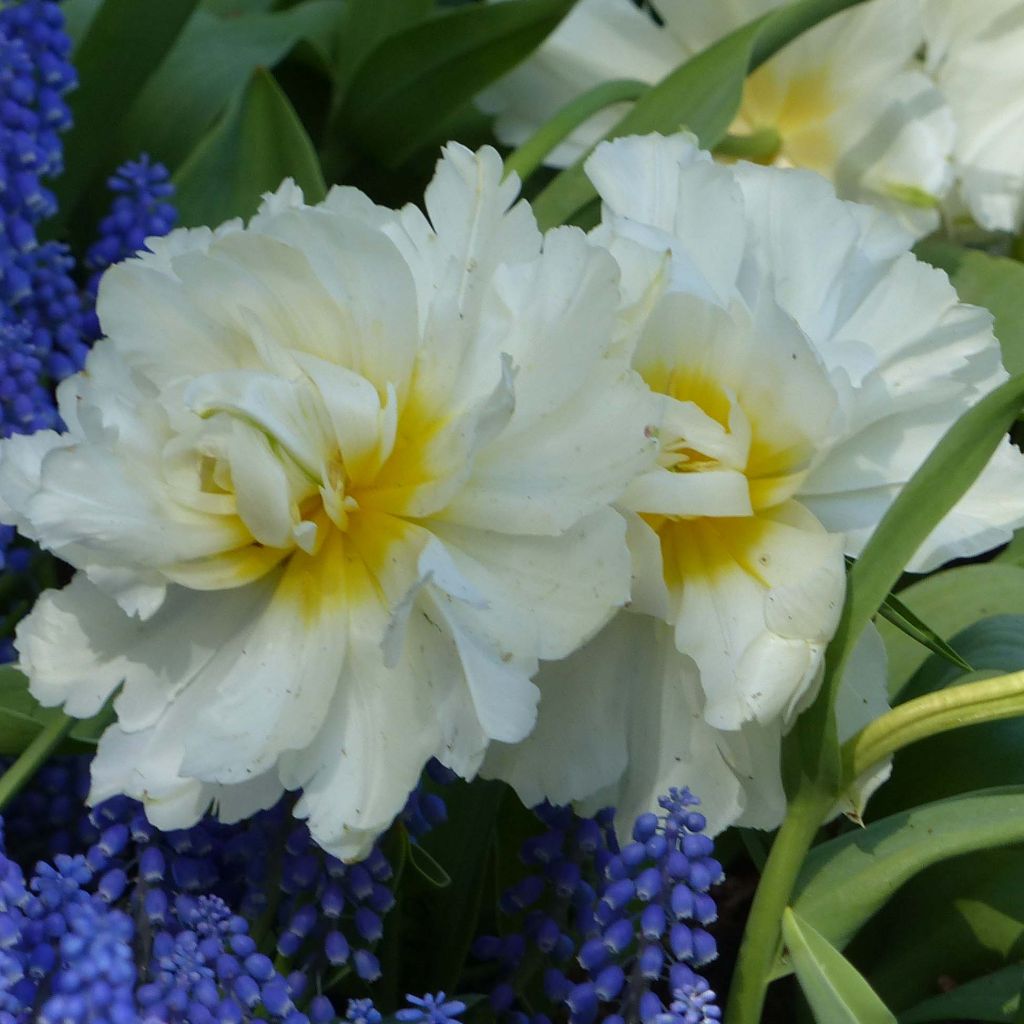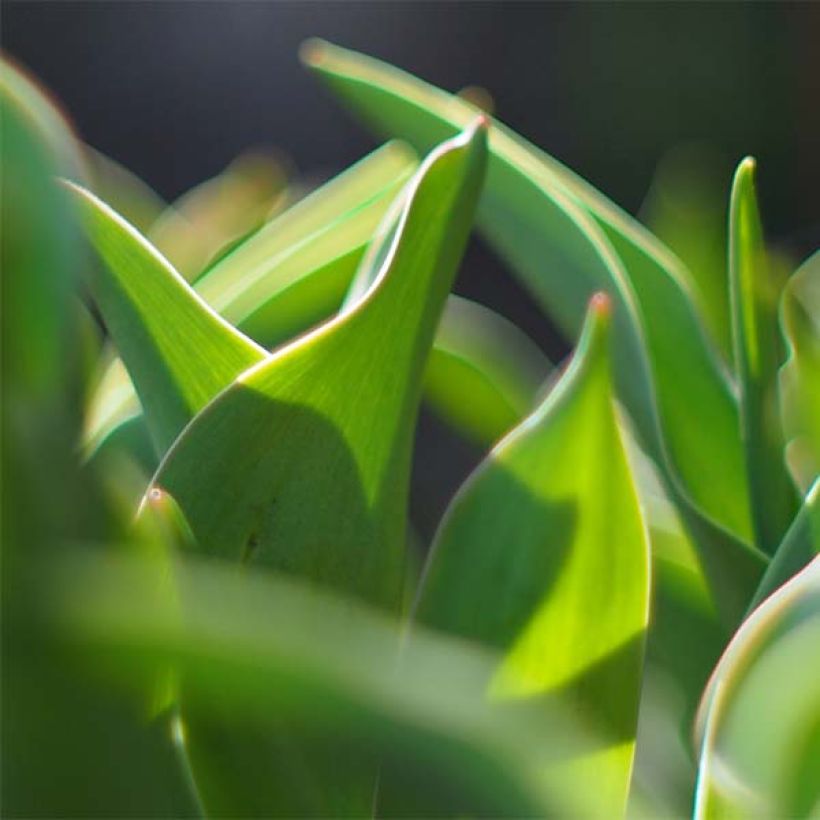

Tulipe double hâtive Cardinal Mindszenty


Tulipe double hâtive Cardinal Mindszenty
Tulipa Cardinal Mindszenty
Tulipa Cardinal Mindszenty
tulip
I wouldn't say that this tulip is 'early', but it is magnificent. A bit surprising, at first, it starts flowering at ground level (planted too deep? I followed the instructions though), then its stem rises, but not too much, it remains sturdy. It has bloomed for a long time, in the shade, and, surprise, it is fragrant! It succeeded the Pétrel narcissus and other white narcissus, received as a gift, all very beautiful, very fragrant, with a very long flowering period. The Blue Pearl hyacinths and the blanda anemones were also a success. If I often have problems with the perennials from Promesse de fleurs, the bulbs are almost always perfect, and they are not found in garden centres!
Anne R., 03/05/2020
This plant carries a 6 months recovery warranty
More information
We guarantee the quality of our plants for a full growing cycle, and will replace at our expense any plant that fails to recover under normal climatic and planting conditions.
From €5.90 for pickup delivery and €6.90 for home delivery
Express home delivery from €8.90.

Does this plant fit my garden?
Set up your Plantfit profile →
Description
Tulipa Cardinal Midszenty is a historic variety with a magnificent, pure white peony-like flower early in spring. It has a slight fragrance and is gracefully ruffled when fully open. Its solitary flower appears huge at the top of a very short stem that emerges from lush and wavy foliage. One of the first to bloom in the garden, it has long captured the hearts of gardeners, just like the beautiful Angelique will do next. Combine them both in a bed, with small Cardinal Midszenty in the front row, and tall Angelique behind it, and their flowering will succeed each other for almost 2 months!
Tulipa 'Cardinal Midszenty' was introduced in 1949 in the Netherlands and belongs to the Liliaceae family. Of horticultural origin and considered a historic variety, it is officially classified in the group of 'Early Double Tulips', whose main characteristic is large double flowers, resembling peonies, carried by short stems. 'Cardinal Midszenty' will reach about 25 cm (10in) high when in bloom. The brightly coloured flowers are perched on sturdy stems, just above the broadly lanceolate leaves. They have a diameter of up to 11 cm (4in) and stand out well in the garden. The very rounded corolla of this tulip is set in a casing of petals more or less flecked with almond green on opening and each flower reveals a dark yellow throat punctuated with golden stamens when fully open. They will flower in March-April, at the beginning of the tulip season.
'Cardinal Midszenty' is a tulip worthy of the most beautiful canvases of the Flemish masters, or in a bridal bouquet. Its white, modest size, precious flowers can be combined with all other flowers. It will be sensational when paired with Belle Epoque Tulip, Sweet Amy, and Purple Pion Tulip or forget-me-nots and grape hyacinths. Its beautiful white, water lily-like flowers can be placed in a bowl with daisies and fern leaves to create a very pretty centrepiece. Early double tulips are well-known for their richly coloured, sturdy and often fragrant flowers, usable in beds, rockeries and bouquets.
Tulips are unmatched for bringing early-season charm to pots or sunny gardens. Remember to consider the height and flowering period of your tulips when designing your beds, as these can vary significantly from one cultivar to another. It is a good idea to plant a few more bulbs for superb cut flowers that last a long time in a vase.
Report an error about the product description
Tulipa Cardinal Mindszenty in pictures




Plant habit
Flowering
Foliage
Botanical data
Tulipa
Cardinal Mindszenty
Liliaceae
tulip
Cultivar or hybrid
Planting and care
Plant Cardinal Mindszenty tulips in a sunny or partially shaded location, sheltered from strong winds, from October to December for spring flowering. Plant the bulbs at a depth of 15 cm (6in) in light and well-drained soil that has been deeply loosened. Space them 10 cm (4in) apart without allowing them to touch to create a mass effect. Cut the flower stalks after flowering but allow the leaves to completely dry before cutting them. Tulips do not like stagnant moisture, especially when they are in their summer resting period.
Planting period
Intended location
Care
-
, onOrder confirmed
Reply from on Promesse de fleurs
Haven't found what you were looking for?
Hardiness is the lowest winter temperature a plant can endure without suffering serious damage or even dying. However, hardiness is affected by location (a sheltered area, such as a patio), protection (winter cover) and soil type (hardiness is improved by well-drained soil).

Photo Sharing Terms & Conditions
In order to encourage gardeners to interact and share their experiences, Promesse de fleurs offers various media enabling content to be uploaded onto its Site - in particular via the ‘Photo sharing’ module.
The User agrees to refrain from:
- Posting any content that is illegal, prejudicial, insulting, racist, inciteful to hatred, revisionist, contrary to public decency, that infringes on privacy or on the privacy rights of third parties, in particular the publicity rights of persons and goods, intellectual property rights, or the right to privacy.
- Submitting content on behalf of a third party;
- Impersonate the identity of a third party and/or publish any personal information about a third party;
In general, the User undertakes to refrain from any unethical behaviour.
All Content (in particular text, comments, files, images, photos, videos, creative works, etc.), which may be subject to property or intellectual property rights, image or other private rights, shall remain the property of the User, subject to the limited rights granted by the terms of the licence granted by Promesse de fleurs as stated below. Users are at liberty to publish or not to publish such Content on the Site, notably via the ‘Photo Sharing’ facility, and accept that this Content shall be made public and freely accessible, notably on the Internet.
Users further acknowledge, undertake to have ,and guarantee that they hold all necessary rights and permissions to publish such material on the Site, in particular with regard to the legislation in force pertaining to any privacy, property, intellectual property, image, or contractual rights, or rights of any other nature. By publishing such Content on the Site, Users acknowledge accepting full liability as publishers of the Content within the meaning of the law, and grant Promesse de fleurs, free of charge, an inclusive, worldwide licence for the said Content for the entire duration of its publication, including all reproduction, representation, up/downloading, displaying, performing, transmission, and storage rights.
Users also grant permission for their name to be linked to the Content and accept that this link may not always be made available.
By engaging in posting material, Users consent to their Content becoming automatically accessible on the Internet, in particular on other sites and/or blogs and/or web pages of the Promesse de fleurs site, including in particular social pages and the Promesse de fleurs catalogue.
Users may secure the removal of entrusted content free of charge by issuing a simple request via our contact form.
The flowering period indicated on our website applies to countries and regions located in USDA zone 8 (France, the United Kingdom, Ireland, the Netherlands, etc.)
It will vary according to where you live:
- In zones 9 to 10 (Italy, Spain, Greece, etc.), flowering will occur about 2 to 4 weeks earlier.
- In zones 6 to 7 (Germany, Poland, Slovenia, and lower mountainous regions), flowering will be delayed by 2 to 3 weeks.
- In zone 5 (Central Europe, Scandinavia), blooming will be delayed by 3 to 5 weeks.
In temperate climates, pruning of spring-flowering shrubs (forsythia, spireas, etc.) should be done just after flowering.
Pruning of summer-flowering shrubs (Indian Lilac, Perovskia, etc.) can be done in winter or spring.
In cold regions as well as with frost-sensitive plants, avoid pruning too early when severe frosts may still occur.
The planting period indicated on our website applies to countries and regions located in USDA zone 8 (France, United Kingdom, Ireland, Netherlands).
It will vary according to where you live:
- In Mediterranean zones (Marseille, Madrid, Milan, etc.), autumn and winter are the best planting periods.
- In continental zones (Strasbourg, Munich, Vienna, etc.), delay planting by 2 to 3 weeks in spring and bring it forward by 2 to 4 weeks in autumn.
- In mountainous regions (the Alps, Pyrenees, Carpathians, etc.), it is best to plant in late spring (May-June) or late summer (August-September).
The harvesting period indicated on our website applies to countries and regions in USDA zone 8 (France, England, Ireland, the Netherlands).
In colder areas (Scandinavia, Poland, Austria...) fruit and vegetable harvests are likely to be delayed by 3-4 weeks.
In warmer areas (Italy, Spain, Greece, etc.), harvesting will probably take place earlier, depending on weather conditions.
The sowing periods indicated on our website apply to countries and regions within USDA Zone 8 (France, UK, Ireland, Netherlands).
In colder areas (Scandinavia, Poland, Austria...), delay any outdoor sowing by 3-4 weeks, or sow under glass.
In warmer climes (Italy, Spain, Greece, etc.), bring outdoor sowing forward by a few weeks.


































